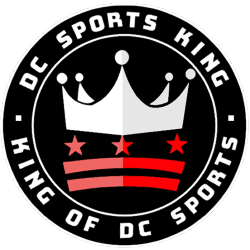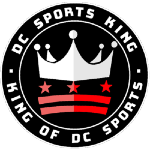Embed from Getty Images
The first real headscratcher of the NBA Draft belonged to the Washington Wizards and their selection of Troy Brown, an 18-year old forward out of Oregon.
The draft had its “okay” moments, but the biggest surprise came when the Wizards selected Brown with the 15th pick overall. There were more attractive names still available such as Lonnie Walker IV, Robert Williams, and Zhaire Smith, yet, Wizards general manager Ernie Grunfeld chose Brown.
It’s safe to say the Wizards reached on Brown at No. 15. CBS Sports had Brown rated as low as the 40th prospect in this year’s draft. Bleacher Report had him 24th and NBADraftNet had him 20th. A report suggested the Wizards were looking to trade back in the draft along with a team taking an expiring contract from them as the cost of moving up. Obviously, no team bit. And given the spot Grunfeld took Brown, it appears he may have been their man all along.
Brown measured at 6-foot-6 with a wingspan of 6-foot-11 and 210-pound frame. That’s good size for a wing. He brings some versatility on both ends of the floor that allows him to play some guard and small forward depending on the lineup.
Here’s what some experts said about Brown entering the draft (h/t Oregonlive.com):
ESPN scouting report: “One of the younger prospects in this draft, Brown has a good combination of size, length and strength for an NBA wing, being big enough to play some small-ball 4 even. Having grown up playing point guard, Brown has a good feel for the game and shows versatility with his unselfish style of play and defensive competitiveness.”
CBS scouting report: “Brown is a wild card in the draft. He was a blue-chip recruit out of high school but was no more than a bit player at Oregon. But similar to Jaylen Brown coming out of Cal, he has the ideal size and athleticism to mesh perfectly in the NBA that is becoming increasingly more positionless.”
Sports Illustrated scouting report: “If they stay put, adding a versatile wing like Brown who can help relieve pressure on their stars with his defense could be intriguing. While he can be too passive offensively, Minnesota as constituted is a situation that wouldn’t require him to score much out of the gate. If his three-point shooting can improve, he could deliver some value.”
Here’s what I’ve gathered:
Strengths
— Great size and frame for an NBA wing.
— Exceptional vision on the floor. He sees the floor well. Makes the right read with no hesitation. He can change the direction of the ball with his palm, allowing him to make some jaw-dropping passes, coming from the wing position is a treasure. With a cutting John Wall or Bradley Beal, the give-and-go can be wonders for the Wizards.
— Great space defender. He attacks the passing lanes with his energy and great reach and wingspan. He jumps on the ball with a lateral burst that can lead to easy buckets in transition. Even on in-bound passes he slithers into the passing window to disrupt the offense or come away with the steal.
— Very high I.Q. leads to good spacing on the offense. He has stealth-like movement on the floor when playing off the ball. Pop-outs are smooth can create good amount of spot-up jumpers. Favorite spot on the floor shooting is a byproduct of his pop-outs. Hangs around the ball. He moves his body to the ball, allowing for passers to see him and make the easier passes to him.
— Can make wide-open shots with spacing. He can get buckets when the closeout is not there. Along with Wall’s passing and Brown’s ability to free himself, Wall’s assist count can go up with Brown’s I.Q. Throw in the fact Brown is an exceptional passer, the ball won’t stick if the closeouts are there.
— No wasted dribbles or motion. Brown is precise in his movement, even when handling the ball. There are no wasted dribbles with his downhill movement. He sees the floor makes up his mind what he wants to do and attacks it whether it’s passing or driving to through the lane. Has a safe dribble that allows him to power drive and get around defenders to get to the rim. He can be a secondary handler in the pick-and-roll because of his passing skills, but only 11 percent of his possessions were pick-and-rolls, per NBA.com. The safe dribble will also keep him from turning over the ball a lot and everyone is open with the ball in his hand
— Good rebounder against guards and small forwards. May need to bulk to bang with fours in the post but crashes the boards off the elbow and out. He can be too much for guards and some small forwards to keep him off the glass.
— Strong finisher. His ability to dunk and attack the rim with layups makes him a strong finisher. He can absorb contact and still finish.
Weaknesses
— Shooting is suspect. While Brown can knock down the open shot, when the closeout is there, or he shoots off the dribble, he struggles. Shot just 29.1 percent from three-point range. That’s a number that must improve to survive in the NBA even as a point forward and especially playing with Wall and Beal who need supporting cast to knock down spot-ups. He shot just 27.3 percent on jumpers off the dribble.
— Slow release. His low shooting percentage is a result of his poor mechanics. He brings the ball from his hip when he shoots, which makes it harder to shoot off the dribble and over closing defenders. Release must speed up and come above his sternum to improve his shot for the NBA.
— Handles. Brown’s safe dribble will keep him from unforced turnovers, but his crossover is not fluid. Has a good behind-the-back dribble used to split defenders, but lack of crossover keeps defenders in front of him. He has to overpower to get by. Bigger small forwards and nimble stretch-fours can hold him in front of them.
— Has moments where he passes too much. His shaky shooting and his overly passive nature on the court leads to unneeded extra passes, passing up on open shots or opportunities to put the ball on the floor and attack.
— No explosion off the dribble. He has a straightforward movement even when going around defenders. Defenders can keep him in front or challenge with greater success in the NBA than in college. NBA wings and stretch-fours will be able to contest his shot attempts with success.
— Can match up with lean stretch-fours in the NBA, but really cannot bang with bigger fours. Not enough leg power and positioning to keep bigger fours off the glass. Can be moved off the block if he cannot slide and lift to use his athleticism.
— No fluid hip movement or superb balance to avoid and blow by defenders his size or bigger.
— Not as strong as a one-on-one defender. Good team defender but needs to improve his ability to lock down and stay in front. Posted a 102.4 defensive rating in large because of his on-ball defense and inability to bang in the post with bigs.
Analysis and Why the Wizards Drafted Troy Brown
The Wizards once again drafted a wing project. It’s the second straight first-round pick they’ve done so with, going back to when they acquired the draft rights to Kelly Oubre in 2015. Speaking of Oubre, this pick speaks to the dire contract situation the Wizards are facing with former Kansas product. Oubre is probably going to command a price too steep for the cap-strapped Wizards in the summer of 2019, therefore Brown could serve as his replacement. Unfortunately, Oubre was a much better shooter, on-ball defender, and athlete.
Brown is a glue guy type. His rise is a byproduct of Draymond Green and his success with the Golden State Warriors. However, Brown does not have the upside of Green, at least initially. It’s going to take Brown longer in developing than Green did. On a team like the Wizards that needs an immediate impact, Brown does not fit the build. He can blossom into a good role player or brink starter, but he is not going to impact whether the Wizards climb back into contention in the Eastern Conference after a disappointing season in 2017-18.
Certainly, Brown does not fit the build of what the Wizards needed, nor does he match what Wall was looking for when he talked on the team’s needs during his exit interview in April.
Brown’s potential won’t be evident for at least two seasons, by then the landscape for the Wizards could be drastically different. And if the Wizards were a lottery-level team this pick would help with the foundation of restoring a team, however, Washington is a team that when healthy is one of the top 4 or 5 teams in the East and a legit threat in the playoffs. Brown is not what stars Wall and Beal need to get over the hump. So, grading today, the Wizards get a C- and the grade would be worse if not for Brown’s do-it-all abilities.
Grade: C-





















